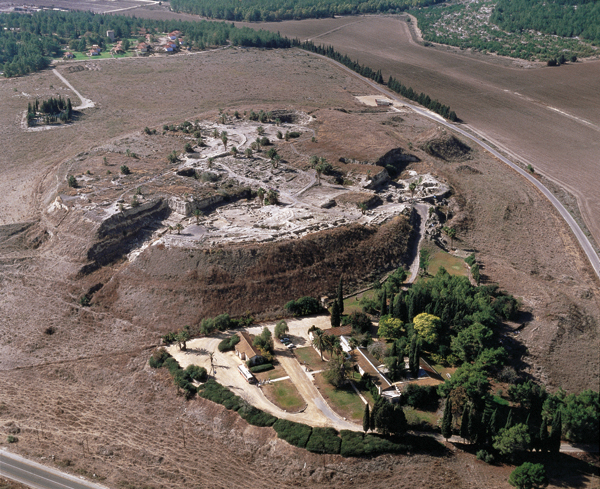Image Details

Sonia Halliday and Laura Lushington, Sonia Halliday Photographs
In 1918, near the end of World War I, General Edmund Allenby (see photo of General Edmund Allenby) planned the final British offensive against the Turkish army, which controlled the ancient site of Megiddo (shown here). Attacking from the southwest, Allenby could have taken longer, unexposed routes to the south or north. Instead, he led his troops straight up the narrow, exposed Wadi ’Ara (see photo of Wadi ’Ara) and routed the unsuspecting Turkish forces.
Nearly 3,400 years earlier, Pharaoh Thutmose III (whose statue in the Luxor Museum is shown in a previous photo) found himself in exactly the same position. Before his assault on then-Canaanite Megiddo, Thutmose’s generals warned that the route through the Wadi ’Ara would leave the Egyptian troops vulnerable to ambush and advised Thutmose to take a safer path, either to the south or north. The pharaoh refused. He charged up the Wadi ’Ara and took the Canaanites by storm.
Is this simply an accident of history? Or did Allenby study Thutmose’s Megiddo campaign and learn from his predecessor? Although Allenby’s biographers have long argued that he knew about the pharaoh’s daring strategy, author Eric Cline suggests that the general’s decision to strike through the narrow pass may have been based purely on military savvy and the topography of the region.
